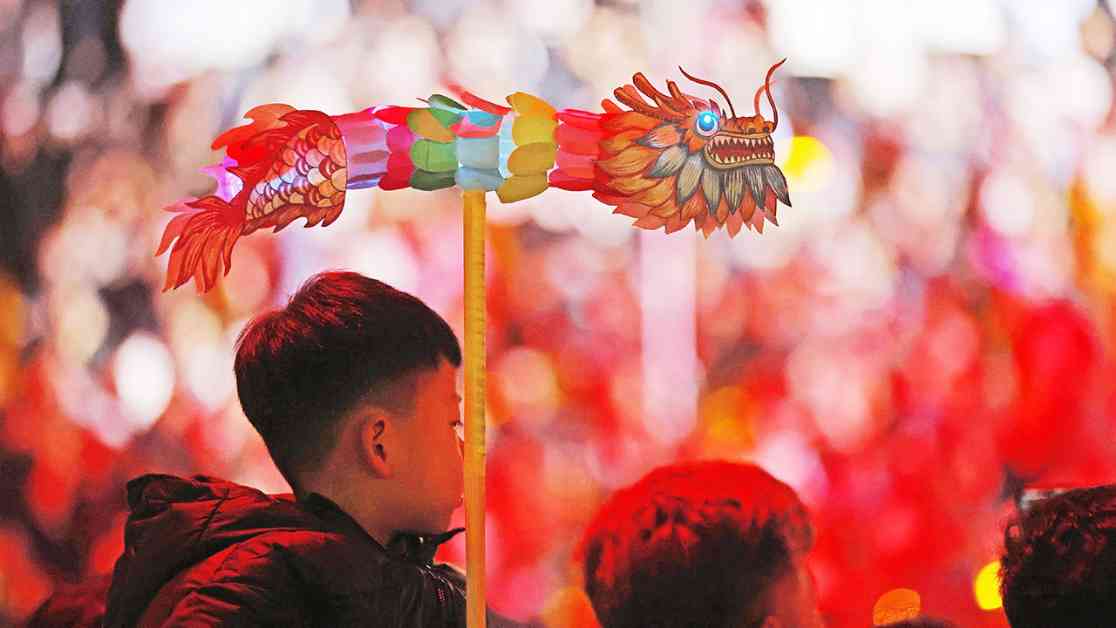Rebranding the Chinese Dragon: A Nationalist Movement
The Chinese zodiac operates on a 12-year cycle, with each year represented by a different animal. The year of the dragon is considered particularly auspicious, symbolizing power, strength, and good fortune. In Chinese culture, dragons are revered creatures, associated with wisdom, longevity, and prosperity. However, as the world becomes more interconnected, the interpretation of these symbols can vary significantly across cultures.
Recently, Chinese state media have sparked a debate by opting to use the term “loong” instead of “dragon” in their English reports. The reasoning behind this choice lies in the perception of dragons in Western culture compared to Chinese beliefs. According to the state-run Beijing Daily, Western dragons are often depicted as evil monsters, breathing fire and causing destruction. In contrast, Chinese dragons are seen as noble and benevolent beings, bringing blessings and good luck to those they encounter.
The Significance of the Loong in Chinese Culture
The term “loong” is pronounced similarly to the Mandarin word for dragon, highlighting the cultural significance of this mythical creature in Chinese folklore. In traditional Chinese art and literature, dragons are depicted as majestic beings with the ability to control the elements and bring rain for a bountiful harvest. They are often associated with the Emperor, symbolizing imperial power and authority.
The symbolic importance of the dragon can be traced back thousands of years, with references to this mythical creature found in ancient Chinese texts and artifacts. Dragons are believed to represent yang energy, the masculine force that balances yin, the feminine principle. This duality is central to Chinese cosmology, reflecting the harmony and balance that are essential to a prosperous society.
The Debate over Rebranding
The decision to rebrand the Chinese dragon as the “loong” reflects a growing trend towards cultural nationalism in China. As the country asserts its influence on the global stage, there is a renewed emphasis on preserving and promoting traditional Chinese values and beliefs. By presenting the dragon in a more positive light, Chinese authorities seek to differentiate their cultural heritage from Western influences.
However, critics argue that this rebranding effort oversimplifies the rich symbolism and complexity of the dragon in Chinese culture. While it is true that Western dragons are often portrayed as villains in folklore and popular media, they also have symbolic meanings that vary across different traditions. By demonizing Western dragons, Chinese nationalists risk perpetuating stereotypes and misunderstandings about other cultures.
The Globalization of Cultural Symbols
The debate over the rebranding of the Chinese dragon highlights the challenges of preserving cultural heritage in an increasingly globalized world. As societies become more interconnected through trade, technology, and media, cultural symbols and traditions are subject to reinterpretation and adaptation. This process can lead to both enriching exchanges and misunderstandings between different cultures.
In the case of the Chinese dragon, its transformation into the “loong” reflects China’s desire to assert its cultural identity on the world stage. By emphasizing the positive attributes of the dragon, Chinese authorities hope to showcase the unique qualities of their heritage and promote a sense of national pride among the population. However, this rebranding effort also raises questions about the fluidity of cultural symbols and the potential for misinterpretation.
In conclusion, the rebranding of the Chinese dragon as the “loong” represents a nationalist movement aimed at reclaiming and reshaping cultural symbols in a globalized world. While the intention may be to celebrate and protect Chinese heritage, the process also highlights the complexities of cultural identity and the challenges of navigating cultural differences in an interconnected society. As China continues to assert its influence on the world stage, the debate over the dragon’s true nature serves as a reminder of the power of symbols to shape perceptions and narratives.



























